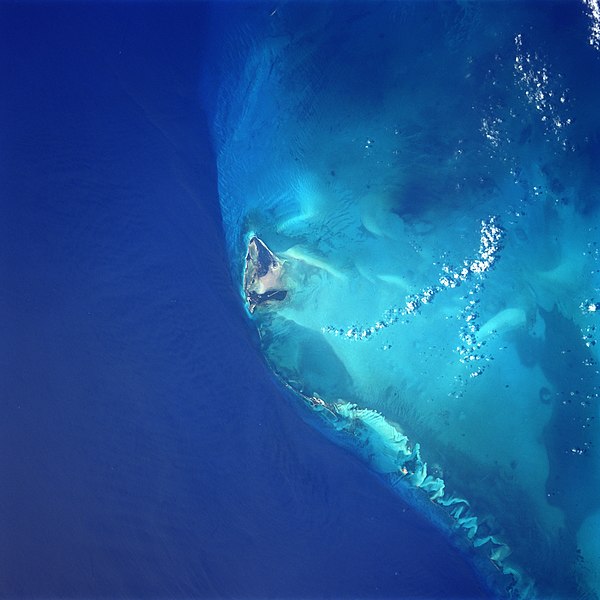The Isla nd
nd
The island, or more accurately islands, of Bimini lie less than 50 miles off the east coast of Florida. In fact, if you look to the west after sunset, you can see the lights of Miami.
Bimini may be just a 20 minute plane ride from the U.S., but this most westerly inhabited island of the Bahamas is a world away. Only a few hundred yards wide in some areas, Bimini is known for fishing, SCUBA diving and, of course, dolphins.
The Water
Bimini lies at the northwestern edge of the Great Bahama Bank, a vast area of warm, shallow water over a sandy seafloor. Portions of the island are made up of intricate mangrove systems, which in addition to great kayaking, are home to dozens of juvenile fish species. This important nursery ground is thought to be the source for many of the fish that grow up to populate other areas of the Bahamas.
Immediately to the west of Bimini, and in stark contrast to the Great Bahama Bank, is the Gulf Stream (aka Florida Straights). The waters swiftly flowing north through this deep ocean trench provide a constant supply of “fresh” water and nutrients to the area, including schooling fish such as mackerel and dolphin (mahi mahi). It is thought that the dolphins (mammals) around Bimini spend the majority of their time in the relative safety of the bank, while cruising out to deep water to feed.
The dolphins
The group of Atlantic spotted dolphins (Stenella frontalis) studied by DCP off the coast of Bimini are thought to be resident animals – meaning that each individual is born and raised, has its own calves and lives out the entirety of its life in the waters immediately surrounding Bimini. Although spotted dolphins are born without spots, they can be recognized by their individual spot pattern, which begins to develop around the age of 3 or 4. By documenting individuals through photographs & video, we can track the population over time & see that we do in fact see the same individuals year after year. Since the animals develop new spots throughout their entire lives, it is important that DCP researchers are able to document as many individuals as possible each year.
There are also common bottlenose dolphins (Tursiops truncatus) found off the coast of Bimini. At the moment, we know significantly less about these individuals, however, that is slowly changing. Members of this species are recognized by nicks in their dorsal fins, which are photographed as the animal breaks the surface to breathe. These photographs are supplimented with full body images from underwater video when possible. There does appear to be some residency pattern among what may be the coastal bottlenose dolphins. It is also likely that there is an offshore bottlenose group, however their exact composition and interaction with the coastal dolphins is not known at this time.
